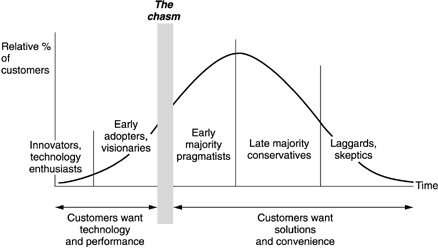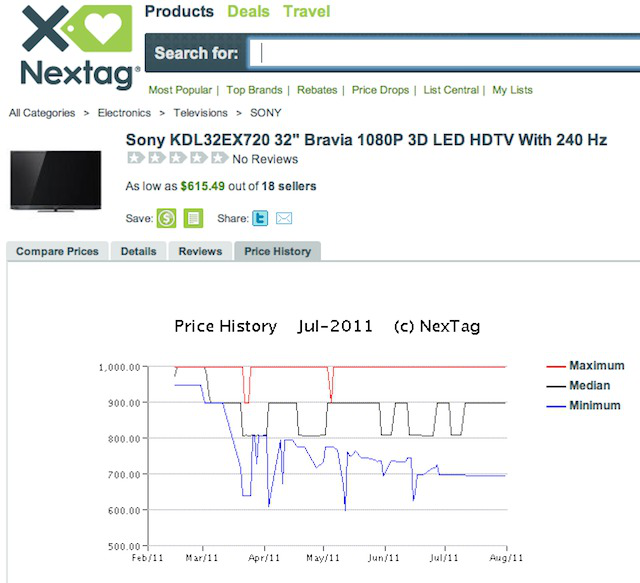
Everyone has that friend (or is that friend) whose gadget-buying timing is always so far behind the curve that their purchases fall just hours before the new version is announced. Not all these people care about riding atop the refresh wave, but as many as not are crestfallen when their new gadget is no longer the new hotness days after buying it.
It's fine to fall on this side of the product-buying bell curve if you're looking for, and getting, a great deal on an previous-generation product. If not, there are new habits to be learned.

Fortunately, the release schedule for the products we discuss here—TVs, consumer PCs, and smartphones—are actually fairly regular for most brands. There are also many resources online that will tell you exactly when a product was released, so you can see how old a product is and infer whether it's a good time to buy based on the typical refresh schedule.
Smartphones
The smartphone industry has only matured within the last couple of years, so OEMs are still finding their release footing. But Michael Morgan, a senior analyst with mobile devices at ABI Research, says the field is orienting itself around the transition from the third to fourth quarter of the year, at the end of September.
Unlike the other two types of devices, the beginning of fall is the major refresh point for handsets, "right before the holiday shopping season," Morgan said. This is where companies position iconic devices they want to move, Morgan said, and it flows nicely into the gift-buying season in China, which happens in January.
This pattern certainly seems to be the case for this year, with the US release of a handful of major phones—the iPhone 5, HP Pre 3, Samsung Galaxy S II, Motorola Droid Bionic—all positioned or rumored for release around the time Morgan cites. More generally, we note that successful lines of phones seem to follow a release schedule of 10-12 months: Motorola Droids, the Droid Incredible line, the Nexus line, and the iPhone line follow refreshes of around a year, or a year minus a couple of months.

There is no shortage of news on the latest smartphones, from Ars as well as on many fan blogs, and a quick browse will let you know what the latest phones are. If you like a phone but aren't sure how old it is, check the dates on reviews of the device, as outlets usually publish them within the first couple of weeks of a device's release. CNET also reliably logs the release dates of most smartphone models as part of their reviews. For iPhone fans, the MacRumors buyer's guide is another good source for tracking how old the latest iPhone model is.
Computers
Computers, especially laptops, seem to be in constant motion throughout the year, with small feature changes happening on a regular basis. But generally, the best component to orient your purchase of a new computer around is the chipset.
Shane Rau, a research director in computing semiconductors at IDC, said that original equipment manufacturers (OEMs) who use the major semiconductor platforms from Intel and AMD—which is just about everyone nowadays—"will usually launch new models based on Intel's and AMD's new platforms introduced in January each year." Rau notes that OEMs will "ramp production of those new models in the ensuing two quarters," meaning that the spring is an optimal time to pick up a new computer. Just after the summer's end is a popular time for minor refreshes, "positioning the refreshed systems for the back-to-school selling season and holiday buying season," Rau said.
Operating by the schedule here is not enough. Customers do still need to pay some attention to which processor they're getting, as manufacturers will sometimes try to slip old hardware by alongside other juiced-up stats. Intel curates a list of all of their chipsets that goes back a few years, though dates of release are buried on the individual product pages; Wikipedia has a spreadsheet of the same information that is easier to glance through. AMD is less forthcoming with the same information, but a similar Wikipedia page is curated for its chipsets.
Some manufacturers, Apple in particular, follow this pattern less strictly. MacRumors keeps a buyer's guide for Apple that tracks release dates of its products, as well as general advice about whether it is a good time to buy based on the typical refresh cycle of the product and related news.
Televisions
Fewer people worry about trying to find the TV-buying sweet spot, because they're not items that the average person buys every two or three years. Still, it strikes us as one of the areas of the electronic store where customers are often waiting for some feature to come out (for instance, there was HD, then flat-panel TVs, then 3D), and once it's out, waiting for it to come down in price. TVs are pretty staunch devices that rarely fail and force the purchase of a new one, but often people end up waiting an inordinately long time to buy because they don't know when to jump in.
According to Michael Palma, a research manager at IDC, almost all major TV brands "refresh in the spring." This means two things: come April, brands like Samsung, LG, Sharp, Sony, Panasonic, and Toshiba should have their newest models on shelf. This also means that the best TV sales can be had starting in January going into the end of February.
Palma also noted that some brands also do a minor refresh in September or October "to catch the wave for the holidays." So just after this transition period isn't a bad time to buy a new TV either, if you're looking to get one with the latest features.

It's rare that retailers will freely distribute release date or pricing history information to their customers. If you're wondering how long a particular TV has been on shelves and how much the price has dropped since its release, retail aggregator Nextag produces graphed price histories of items, including TVs. Because TV models are less volatile than other devices, like computers, and don't go through tiny feature and model number tweaks, their history can be traced for months at a time.
There will likely be (daily) exceptions to the information listed above, but following the general trends will make it easier to grab hold of the latest thing. Alternatively, you can walk the other side of the line to get better prices for brands with older hardware when it goes on sale.
Listing image by Illustration by Aurich Lawson
reader comments
31